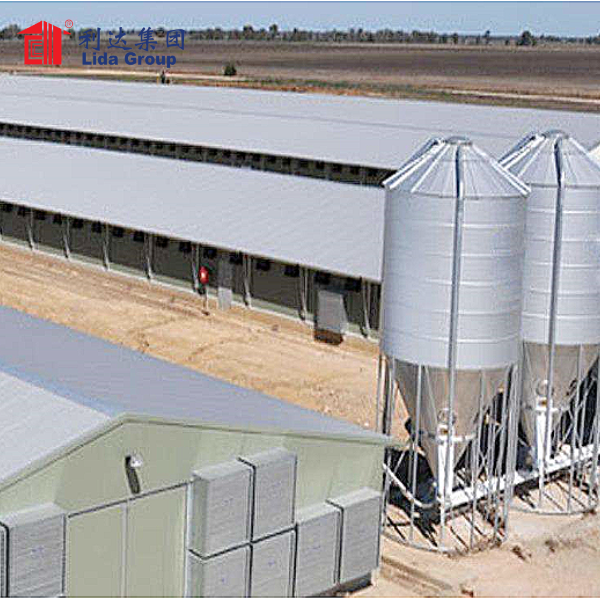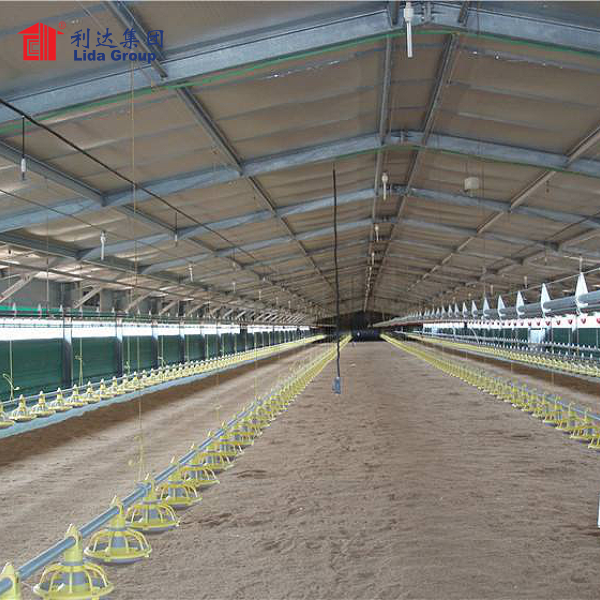Introduction
Proper ventilation is a critical aspect of poultry house design, ensuring a healthy and productive environment for the birds. Lida Group, a renowned provider of light steel structure solutions, offers an exemplary ventilation plan design specifically tailored for poultry houses. This article will explore the importance of ventilation in poultry houses, highlight the benefits of Lida Group’s light steel structures, and delve into the key features of their poultry house ventilation plan design.
- The Significance of Ventilation in Poultry Houses
Ventilation plays a crucial role in maintaining optimal conditions within poultry houses. Effective ventilation helps regulate temperature, humidity, and air quality, which are essential for the birds’ well-being and productivity. Proper airflow prevents heat stress by removing excess heat during hot weather and minimizing cold drafts in colder climates. It also controls humidity levels, reducing moisture buildup that can lead to respiratory problems and the growth of harmful bacteria. Ventilation ensures fresh air circulation, dilutes airborne contaminants, and eliminates unpleasant odors. Moreover, it aids in removing ammonia and other harmful gases produced by the birds and their waste, contributing to a healthier environment. Lida Group recognizes the importance of ventilation and has developed a specialized plan for poultry houses.
- Benefits of Lida Group’s Light Steel Structures
Lida Group’s light steel structures offer several advantages in the construction of poultry houses, particularly concerning ventilation. These structures are made of lightweight yet robust steel frames, which are easy to assemble and provide flexibility in design. The lightweight nature of the structures reduces the load on the foundation, simplifying construction and reducing costs. Additionally, the corrosion-resistant properties of the steel ensure durability and minimal maintenance requirements. The use of light steel structures allows for the incorporation of large openings, windows, and vents, facilitating efficient airflow within the poultry house. These features enhance the overall effectiveness of the ventilation system, contributing to a healthier and more productive environment for the birds.
- Key Features of Lida Group’s Poultry House Ventilation Plan Design
Lida Group’s ventilation plan design for poultry houses incorporates several key features to ensure optimal airflow and environmental control:
a. Airflow Considerations: The ventilation plan takes into account the specific airflow requirements based on factors such as bird density, house size, and prevailing weather conditions. It aims to achieve a uniform distribution of fresh air throughout the poultry house, reaching all areas where the birds reside.
b. Inlet and Outlet Placement: Strategic placement of inlets and outlets is crucial for efficient airflow. Inlets are positioned to allow cool, fresh air to enter the poultry house without causing drafts directly on the birds. Outlets are strategically located to facilitate the removal of warm, stale air and airborne contaminants. This placement ensures a balanced airflow pattern and minimizes the creation of dead zones within the poultry house.
c. Ventilation Equipment Selection: Lida Group’s ventilation plan considers the selection of appropriate equipment, such as fans, evaporative cooling pads, air inlets, and exhaust fans. The equipment is carefully chosen to achieve the desired airflow rates and provide adequate cooling and ventilation during different seasons and weather conditions.
d. Environmental Controls: The ventilation plan incorporates environmental control systems that monitor temperature and humidity levels within the poultry house. These systems can automatically adjust airflow rates, fan speeds, and cooling mechanisms based on real-time environmental data, ensuring precise regulation of the internal environment.
e. Emergency Backup Systems: Lida Group understands the importance of uninterrupted ventilation. Their ventilation plan includes emergency backup systems, such as generators or battery-powered fans, to ensure continuous airflow during power outages or equipment failures. These backup systems help prevent heat stress and maintain good air quality for the birds in critical situations.
Conclusion
Lida Group’s light steel structure poultry house ventilation plan design demonstrates their commitment to creating optimal living conditions for poultry. Proper ventilation is essential for maintaining a healthy and productive environment for the birds, and Lida Group’s expertise in designing ventilation systems is evident in their specialized plan. The benefits of using light steel structures, such as flexibility, durability, and ease of assembly, further enhance the effectiveness of their ventilation solutions. By incorporating key features like strategic airflow considerations, proper inlet and outlet placement, suitable ventilation equipment selection, environmental controls, and emergency backup systems, Lida Group ensures that their poultry house ventilation plan design provides an ideal and controlled environment for poultry growth and welfare.
Post time: Jun-14-2024


